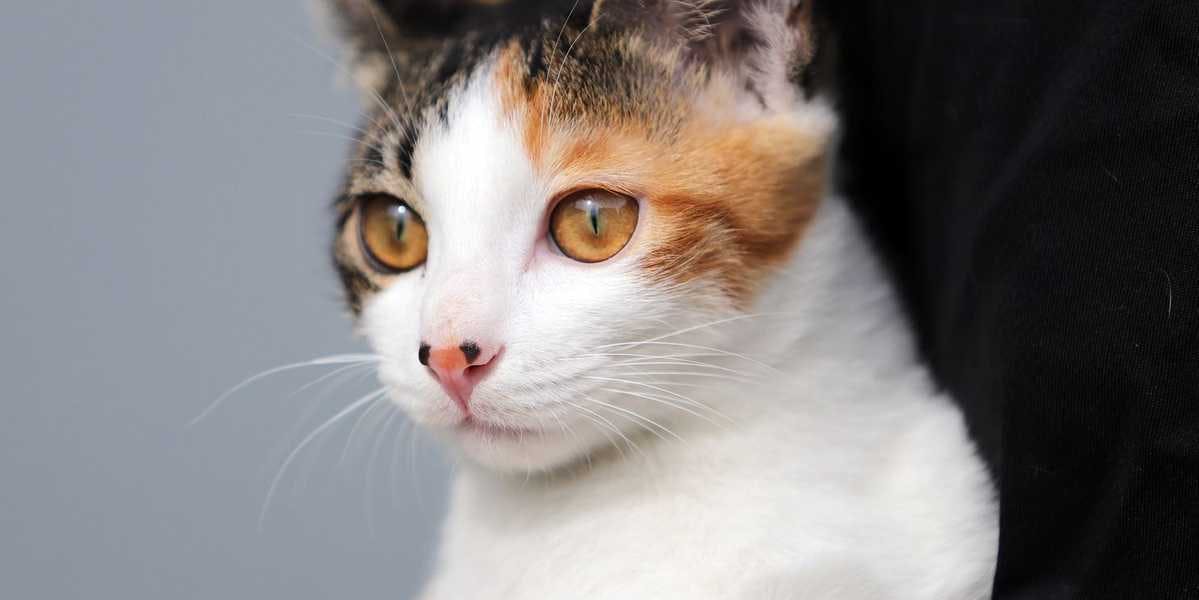NEWS
Calico cat!
The calico cat is commonly mistaken for being a cat breed, many cultures see them as a sign of good fortune, and male calicos are worth a lot of money as they only exist because of a natural genetic error.
The Calico cat
Many people believe the calico cats are a breed of cats, but they couldn’t be more wrong. In fact, it is the name of a unique colour pattern that symbolises good fortune in several cultures. For example, according to Irish folklore, a calico-coloured cat’s tail can be rubbed on warts as a treatment. Feel free to try, but don’t say you haven’t been warned– the method isn’t medically approved.
Calico cat | What colours are recognised as calico?
A tricoloured coat defines the pattern where the most common colours are orange, black and white. However, other variations are also accepted. For example, the colours cream, brown and reddish is almost just as usual. White will always be the predominant colour.
Calico cat in its natural habitat – staring at people with malice.
Calico cat | How do cats become tricoloured?
In Japanese culture, it is believed the first cats to arrive in Japan were black, followed by white, and at last, orange cats. When the offspring of these cats made kittens, the ‘mi-ke’ (three-fur) cat was born, which gave way to what we know today as the calico. However, there are other explanations from more recent times that are based on scientific research.
Calico cats are always almost female– the answer to why lays in their DNA.
In a book called ‘Cats are not peas’ by Laura Gould, the author deep-dives into the genetic reason for calico coloured cats. She found that the answer lies in how their chromosomes function. In her research, she discovered that it’s almost genetically impossible for male cats to get three colours. She concluded:
“When the gene from the mother disagrees with the gene from the father, some mechanism must be used for deciding the nature of the offspring. Often a simple choice is made, depending on which gene is dominant and which is recessive. (In a disagreement about blue eyes vs. brown, the dominant brown gene always wins over the recessive blue, at least in humans.) Sometimes the method of conflict resolution is more complicated.
Calico cats arise when the genes controlling orange coat colour disagree: The gene from one parent says yes, the hair should be orange; the gene from the other says no, it shouldn’t. In this case, for reasons to be explained later, the result is a mosaic– some hairs orange, some black.
The chromosome pairs come in a variety of sizes and shapes, but except for the so-called sex chromosomes, the two members of a pair are always the same size and shape as each other.
Sex chromosomes come in two flavours: X and Y. Mammals with two X chromosomes are female (XX); those with one X and one Y are male (XY).
The two kinds of sex chromosomes differ greatly in size and shape. The X is long, and the Y is very short. Hence there isn’t room on the Y for all the genes that fits on the X.
In cats, the gene for orange hair colour happens to lie on the X. There’s no space for a matching gene on the Y. Therefore, it’s not possible for an XY cat (a male) to have one gene for saying yes orange and a matching gene saying no orange. So, if you see a calico cat, even at great distance, you can be sure that it’s a female. Usually."
Reference: Cats are not peas - A calico history of genetics by Laura Gould.
Male calicos are rare and therefore fulfil a more significant fortune compared to females in most cultures.
It is almost genetically impossible for a male cat to be tri-coloured, as it only happens by mere chance as a genetic error. Still, it does happen, and those male calicos are worth a fortune.
A male calico is considered an ultimate sign of fortune in Japanese culture, as they believe the calico cats are fortune bringers. Therefore, a male calico can be worth a lot of money. The lucky cat is often found in Japanese homes, shops and restaurants are made with calico colours.
The Japanese fortune cat is indeed a Calico cat
Japanese culture
The calico cat brings fortune in various ways in Japanese culture. Homeowners may experience a more fortunate financial situation. Japanese sailors who travel the seas with a calico onboard are safe from the great and dangerous powers of storms. While Japanese brothels keep the cats in their facilities to ensure the potency of their clientele.
Calico vs Tortoiseshell
Tortoiseshell cats are also referring to a colour pattern and not a breed of cats. The colours are very much the same, but the difference is that the calico is predominantly white with black and orange, while a tortoiseshell cat is predominantly black with orange, and maybe a few patches of white.
Tortoiseshell cat is another colour pattern commonly misunderstood for a cat breed, such as the calico cat.
Contact us
Contact us
Media & Partnerships
info@lilbit.no
Address
Lildog AS - Skippergata 14
7042 Trondheim, Norway
